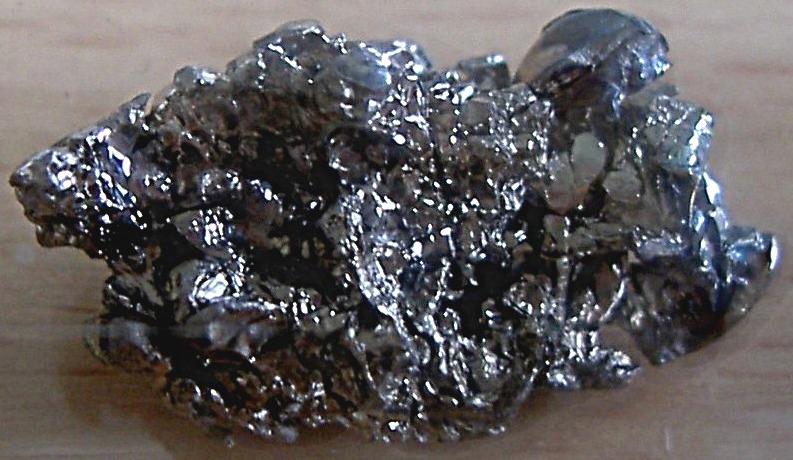Barium is a chemical element with the symbol Ba and atomic number 56. It is the fifth element in group 2 and is a soft, silvery alkaline earth metal. Because it is highly reactive, barium is never found in nature as a free element.
The most common minerals of barium are baryte and witherite. The name barium originates from the alchemical derivative “baryta”, from Greek barys, meaning ‘heavy’.

Facts
Barium is a chemical element with the symbol Ba
Barium atomic number 56
Barium is a soft, silvery-white metal, with a slight golden shade when ultrapure
The name barium originates from the alchemical derivative “baryta”, from Greek barys, meaning ‘heavy’.
Because of its high chemical reactivity, barium is never found in nature as a free element.
Barium was identified as an element in barite by Carl Scheele in 1774, but he could not isolate it.
Johan Gottlieb Gahn also isolated barium oxide two years later in similar studies
Sir Humphry Davy discovered barium in 1808.
The most common minerals of barium are baryte (barium sulfate) and witherite (barium carbonate).
Barium found in the Earth’s crust is a mixture of seven primordial nuclides, barium-130, 132, and 134 through 138.
In total, barium has 40 known isotopes, ranging in mass between 114 and 153.
Barium-138 composes 71.7% of all barium
The most stable artificial radioisotope is barium-133 with a half-life of approximately 10.51 years
Ba-112, is the heaviest discovered atom to have the same amount of protons and neutrons.
The abundance of barium is 0.0425% in the Earth’s crust
The abundance of barium is 13 μg/L in seawater
The primary commercial source of barium is baryte
The main deposits are located in Britain, Romania, and the former USSR
The baryte reserves are estimated between 0.7 and 2 billion tonnes
The barium mineral, benitoite is the official state gem of California.
Barium is used in the production of vacuum tubes by removing noble gases due to its low vapor pressure.
Barium plays a key role in radiological reactants, helping organs show up on X-rays.
The average adult contains about 22 mg of barium as it is present in foods such as carrots, onions, lettuce, beans, and grains.
Excessive Barium can cause conditions such as vomiting, colic, diarrhea, tremors, and even paralysis.
Uses
Barium, typically as barium nitrate imparts a yellow or “apple” green color to fireworks
Barium oxide is used as a coating on the electrodes of fluorescent lamps
Barium fluoride is used for optics in infrared applications
Barium peroxide is used as a catalyst for welding rail tracks.
Barium peroxide is also used as a green flare in tracer ammunition and a bleaching agent
Information
| Pronunciation | BAIR-ee-əm | ||||||||||||||||||||||||||||||||||||||||||||||||||
|---|---|---|---|---|---|---|---|---|---|---|---|---|---|---|---|---|---|---|---|---|---|---|---|---|---|---|---|---|---|---|---|---|---|---|---|---|---|---|---|---|---|---|---|---|---|---|---|---|---|---|---|
| Appearance | silvery gray; with a pale yellow tint | ||||||||||||||||||||||||||||||||||||||||||||||||||
| Standard atomic weight Ar°(Ba) | |||||||||||||||||||||||||||||||||||||||||||||||||||
|
|||||||||||||||||||||||||||||||||||||||||||||||||||
| Atomic number (Z) | 56 | ||||||||||||||||||||||||||||||||||||||||||||||||||
| Group | group 2 (alkaline earth metals) | ||||||||||||||||||||||||||||||||||||||||||||||||||
| Period | period 6 | ||||||||||||||||||||||||||||||||||||||||||||||||||
| Block | s-block | ||||||||||||||||||||||||||||||||||||||||||||||||||
| Electron configuration | [Xe] 6s2 | ||||||||||||||||||||||||||||||||||||||||||||||||||
| Electrons per shell | 2, 8, 18, 18, 8, 2 | ||||||||||||||||||||||||||||||||||||||||||||||||||
| Physical properties | |||||||||||||||||||||||||||||||||||||||||||||||||||
| Phase at STP | solid | ||||||||||||||||||||||||||||||||||||||||||||||||||
| Melting point | 1000 K (727 °C, 1341 °F) | ||||||||||||||||||||||||||||||||||||||||||||||||||
| Boiling point | 2118 K (1845 °C, 3353 °F) | ||||||||||||||||||||||||||||||||||||||||||||||||||
| Density (near r.t.) | 3.51 g/cm3 | ||||||||||||||||||||||||||||||||||||||||||||||||||
| when liquid (at m.p.) | 3.338 g/cm3 | ||||||||||||||||||||||||||||||||||||||||||||||||||
| Heat of fusion | 7.12 kJ/mol | ||||||||||||||||||||||||||||||||||||||||||||||||||
| Heat of vaporization | 142 kJ/mol | ||||||||||||||||||||||||||||||||||||||||||||||||||
| Molar heat capacity | 28.07 J/(mol·K) | ||||||||||||||||||||||||||||||||||||||||||||||||||
Vapor pressure
|
|||||||||||||||||||||||||||||||||||||||||||||||||||
| Atomic properties | |||||||||||||||||||||||||||||||||||||||||||||||||||
| Oxidation states | +1, +2 (a strongly basic oxide) | ||||||||||||||||||||||||||||||||||||||||||||||||||
| Electronegativity | Pauling scale: 0.89 | ||||||||||||||||||||||||||||||||||||||||||||||||||
| Ionization energies |
|
||||||||||||||||||||||||||||||||||||||||||||||||||
| Atomic radius | empirical: 222 pm | ||||||||||||||||||||||||||||||||||||||||||||||||||
| Covalent radius | 215±11 pm | ||||||||||||||||||||||||||||||||||||||||||||||||||
| Van der Waals radius | 268 pm | ||||||||||||||||||||||||||||||||||||||||||||||||||
|
|
|||||||||||||||||||||||||||||||||||||||||||||||||||
| Other properties | |||||||||||||||||||||||||||||||||||||||||||||||||||
| Natural occurrence | primordial | ||||||||||||||||||||||||||||||||||||||||||||||||||
| Crystal structure | body-centered cubic (bcc) | ||||||||||||||||||||||||||||||||||||||||||||||||||
| Speed of sound thin rod | 1620 m/s (at 20 °C) | ||||||||||||||||||||||||||||||||||||||||||||||||||
| Thermal expansion | 20.6 µm/(m⋅K) (at 25 °C) | ||||||||||||||||||||||||||||||||||||||||||||||||||
| Thermal conductivity | 18.4 W/(m⋅K) | ||||||||||||||||||||||||||||||||||||||||||||||||||
| Electrical resistivity | 332 nΩ⋅m (at 20 °C) | ||||||||||||||||||||||||||||||||||||||||||||||||||
| Magnetic ordering | paramagnetic | ||||||||||||||||||||||||||||||||||||||||||||||||||
| Molar magnetic susceptibility | +20.6×10−6 cm3/mol | ||||||||||||||||||||||||||||||||||||||||||||||||||
| Young’s modulus | 13 GPa | ||||||||||||||||||||||||||||||||||||||||||||||||||
| Shear modulus | 4.9 GPa | ||||||||||||||||||||||||||||||||||||||||||||||||||
| Bulk modulus | 9.6 GPa | ||||||||||||||||||||||||||||||||||||||||||||||||||
| Mohs hardness | 1.25 | ||||||||||||||||||||||||||||||||||||||||||||||||||
| CAS Number | 7440-39-3 | ||||||||||||||||||||||||||||||||||||||||||||||||||
| History | |||||||||||||||||||||||||||||||||||||||||||||||||||
| Discovery | Carl Wilhelm Scheele (1772) | ||||||||||||||||||||||||||||||||||||||||||||||||||
| First isolation | Humphry Davy (1808) | ||||||||||||||||||||||||||||||||||||||||||||||||||
|
|||||||||||||||||||||||||||||||||||||||||||||||||||
